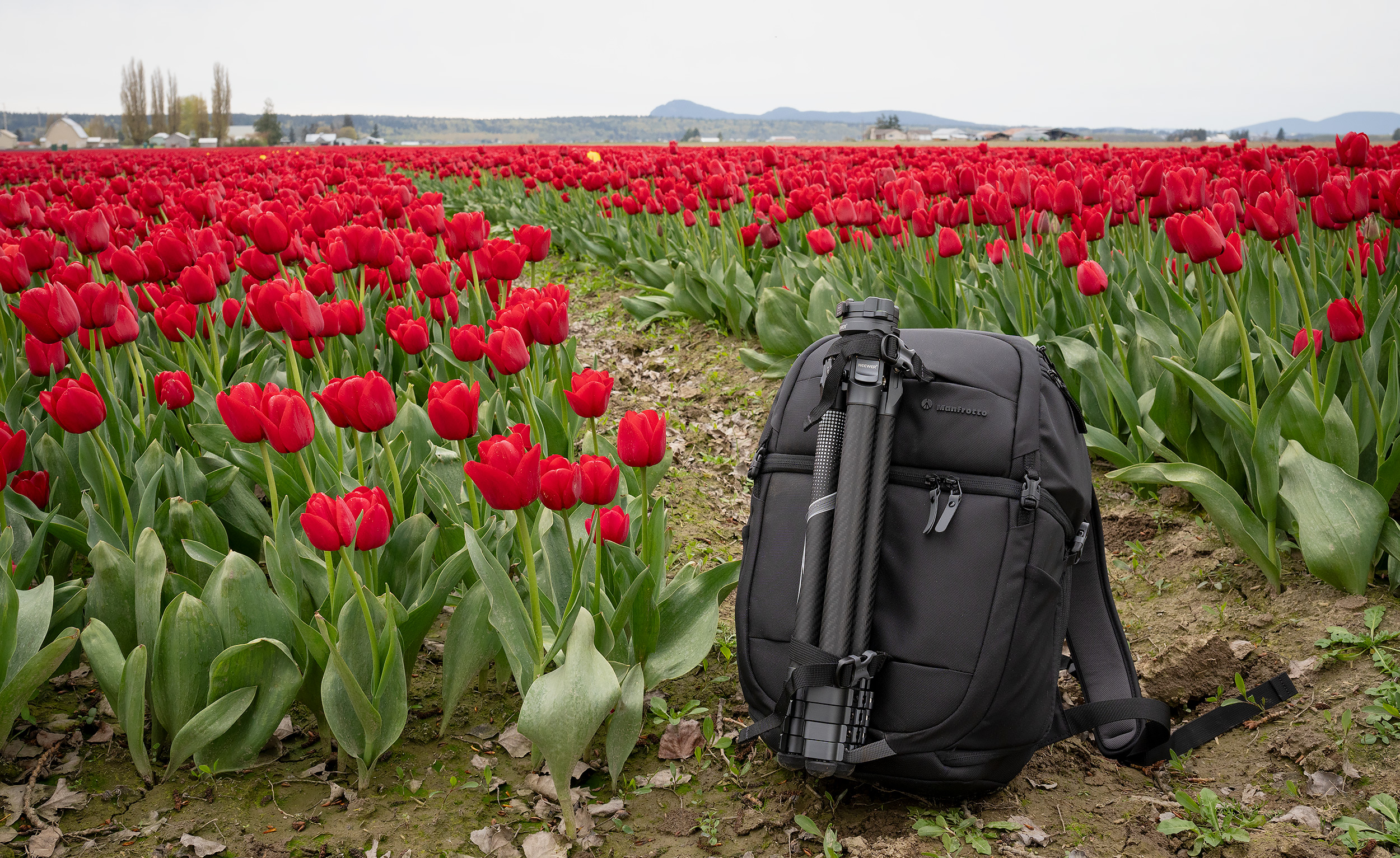For my recent trip to Japan, I decided on a new camera bag: a Manfrotto Advanced Fast Backpack III. After spending an afternoon packing gear, I decided that it could hold everything that I needed, but not everything that I wanted, so I unpacked it and, again, carried my big old ThinkTank backpack. A week later, on the subway in Tokyo, I wished that I had gone with the Manfrotto instead.
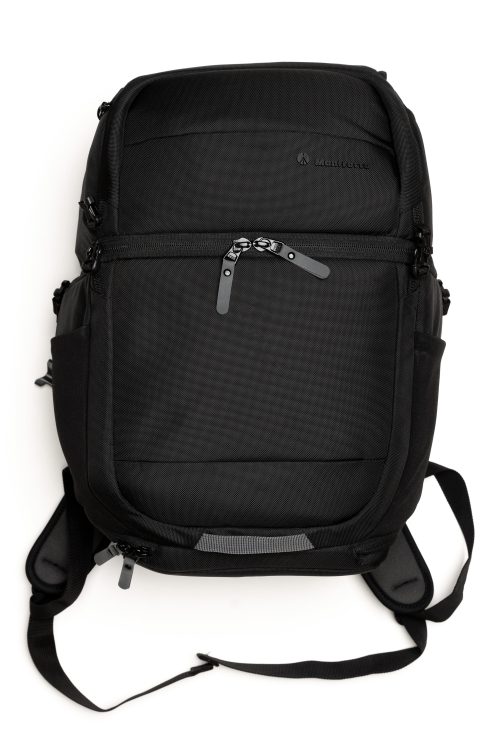
The fact is, the Manfrotto is an excellent size. It’s big enough to hold my full-frame Sony A7RIII body (with grip) and 70-200 f/2.8, a few more lenses, and my Sony a6700 APS-C body with its little Sigma 18-50 f/2.8 as well. And my DJI mini3 Pro. And my full-size headphones and laptop, and Kindle for the plane. And it still fits under the seat in front of me on the plane.
Now that I’m back in the US, I’ve been doing what I should have done then: I’ve packed it for trips through the forests of Cascades, the tulip fields of Skagit county, and the streets of downtown Seattle.
Should I really have taken the Manfrotto on my month-long trip to Japan? Is it as good as I had hoped when I ordered it? What is this pack best suited for? Let’s take a closer look at the details.
Advanced Fast Backpack III: Size and Equipment Access
The Advanced Fast Backpack III is an 18.5 liter bag, making it a bit smaller than most of my camera backpacks (my Wandrd DUO is probably the closest standard pack in size at 20L, while my ThinkTank Essentials airport roller backpack is about 18L), but it’s not too small to carry everything I need for most day trips. It weighs 2.7lbs, which is not bad at all.
Divided into two separate compartments… a lower camera compartment and a smaller upper area for food or a drone or a jacket or whatever else you want to carry… it’s an excellent multi-use pack.
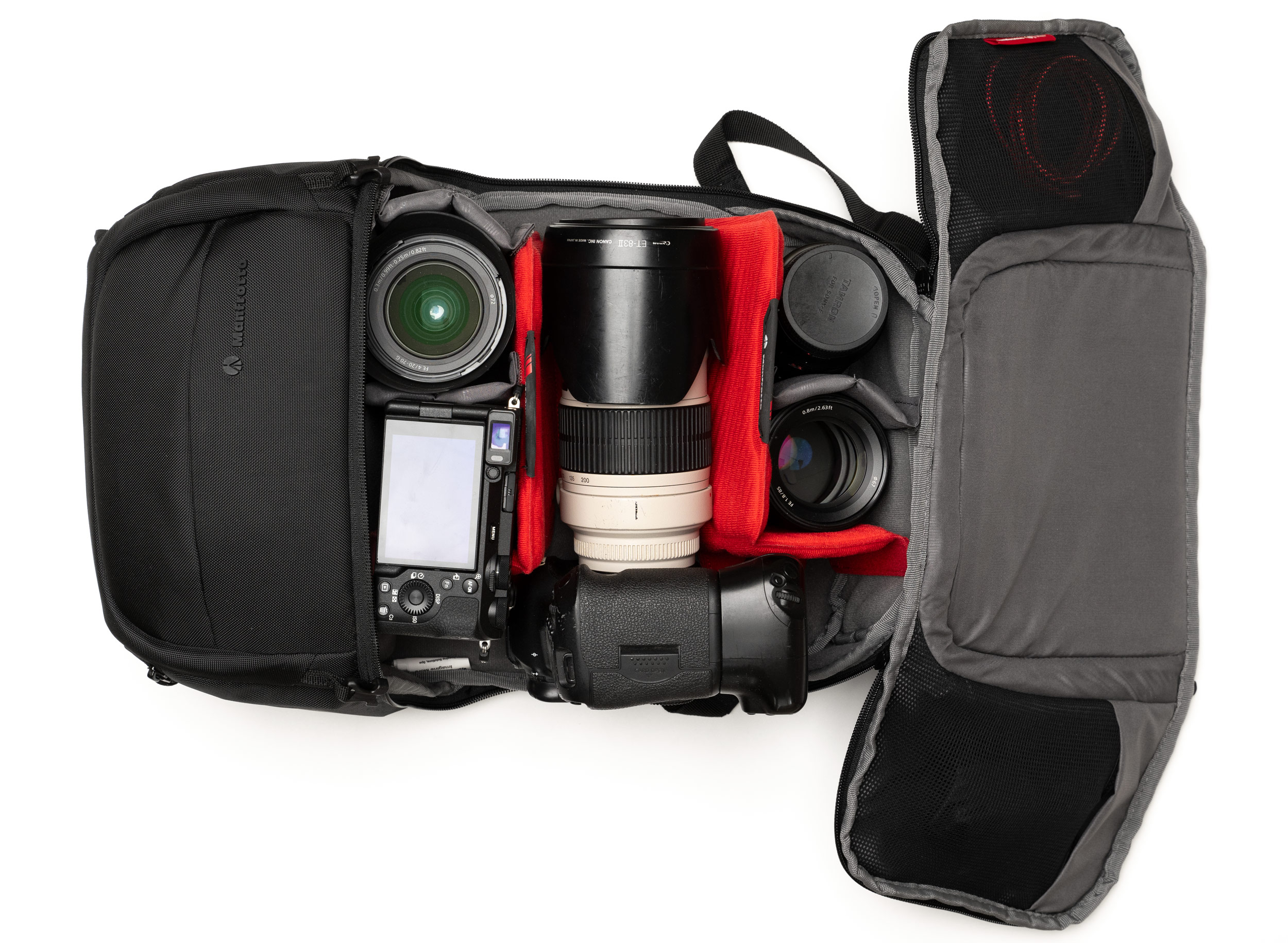
The pack arrives with dividers already set up in the main compartment for a camera body with a 70-200mm lens attached and four smaller lenses (or flashes, drones1I often keep my DJI Mini3 Pro in the compartment in the bottom right corner., etc).
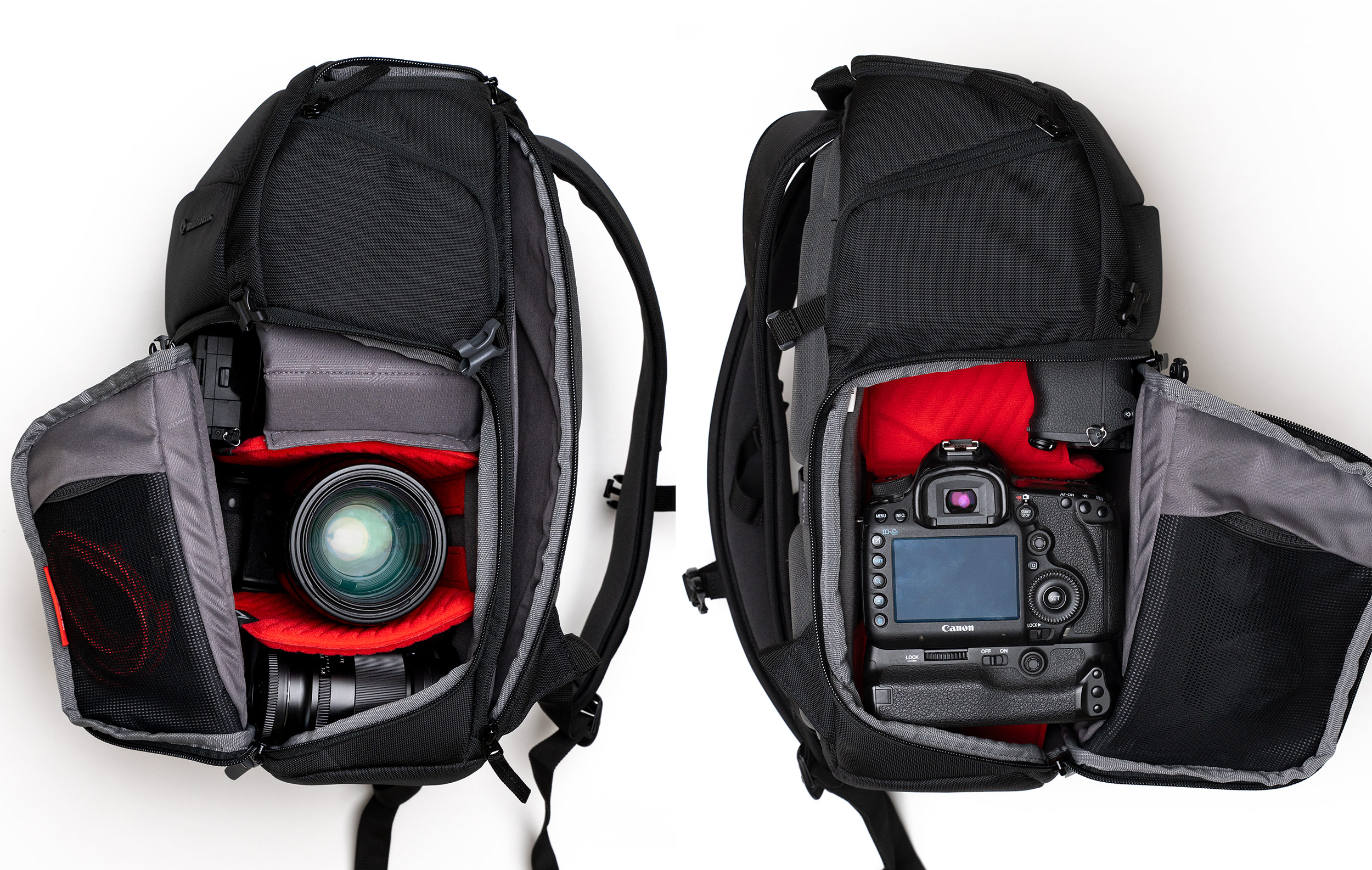
For quick camera access, you can open either of the two side flaps of the main compartment. Since most of the lens compartments don’t open towards the sides, it is usually easiest to access them by opening the zippers at least halfway across the front of the pack.
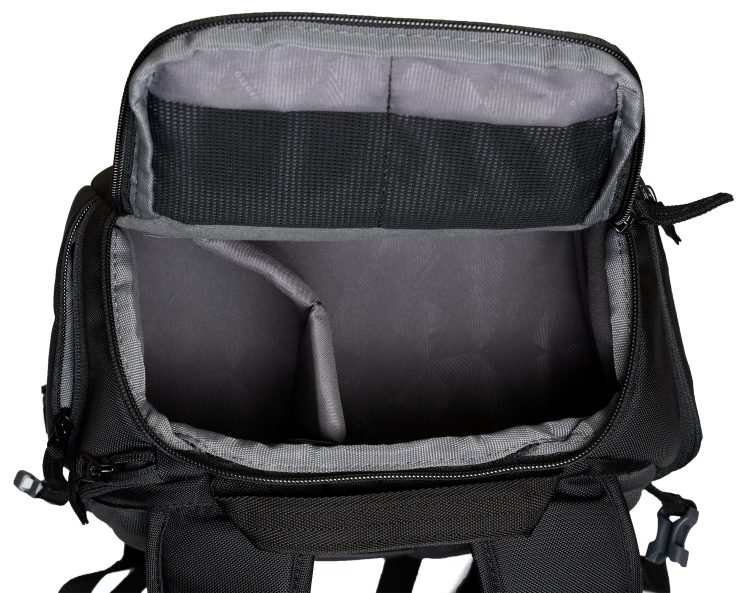
The second compartment opens from the top of the bag and can also be organized with Velcro dividers. On the interior of the flap you’ll find two mesh pockets that can hold filters or other small items. I’d have preferred zippers on these pockets (they just have a flap over top), but they’re quick to get into, so they’re growing on me.
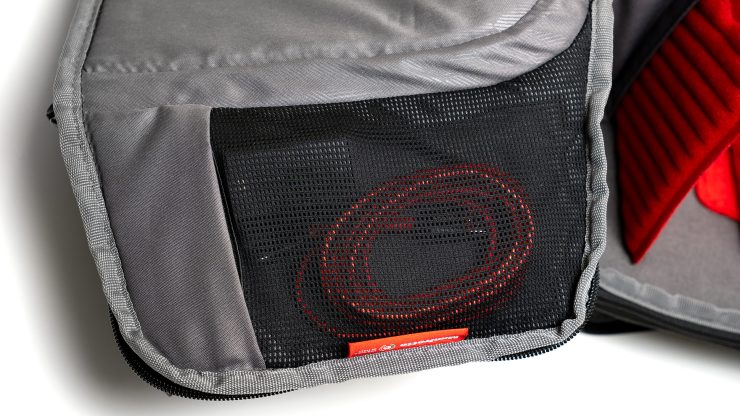
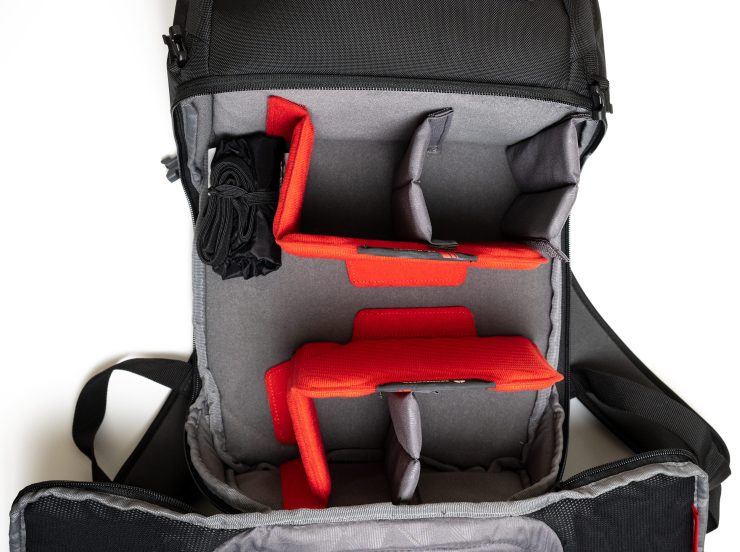

On either side of the upper compartment on the pack’s exterior are two more small pockets with zippers across the top, which I’ve found to be perfect for carrying extra batteries and my memory card case. Below these you’ll find handy pockets for a water bottle.
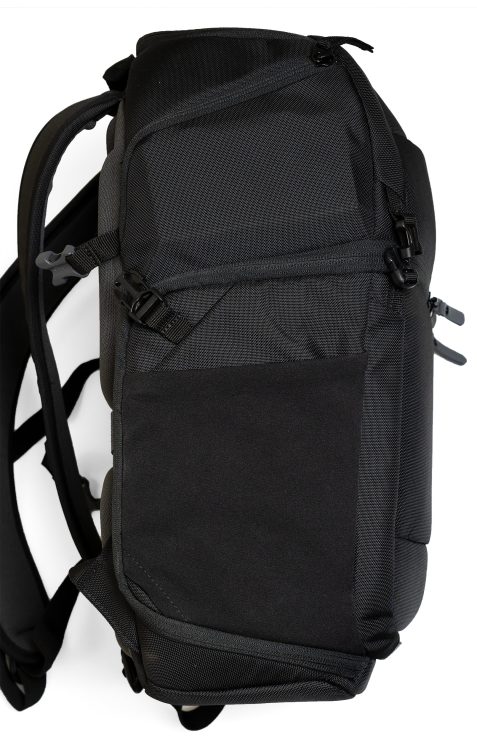
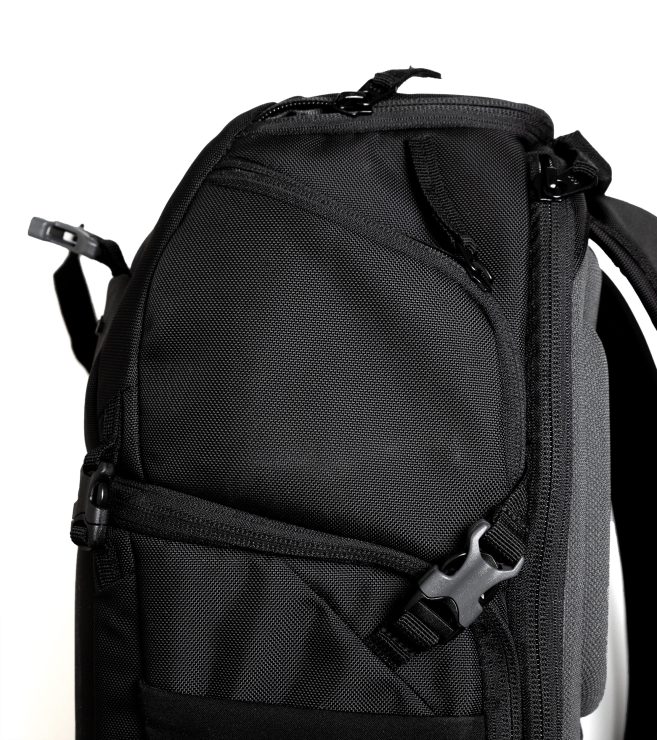
For me, this is just about the perfect amount of space necessary for a day trip, since I generally carry 24-70, 70-200, and 17-28 f/2.8 lenses, and sometimes a large aperture prime as well. A tripod and one or two water bottles are easily accessible from the exterior of the pack, and the top compartment holds my food and a light jacket and other assorted gear.
For some circumstances, though, a larger pack will be helpful or necessary. My Sigma 150-600mm f/5-6.3 lens will fit into the pack, but not while attached to the camera body, and of course, a large aperture super-telephoto (300mm f/2.8 or larger) will not be an option. For long day-hikes, I could stand a little more volume in the top compartment, but I can certainly get along without it.
Extra Features & What is it Missing?
Probably the most distinctive features of the Manfrotto Advanced Fast Backpack III are the unique pockets in which it hides its tripod straps. At first glance, these appear to simply be two horizontal seams running across the front face of the pack, one towards the top of the pack (just above the logo) and the other a few inches above the bottom.
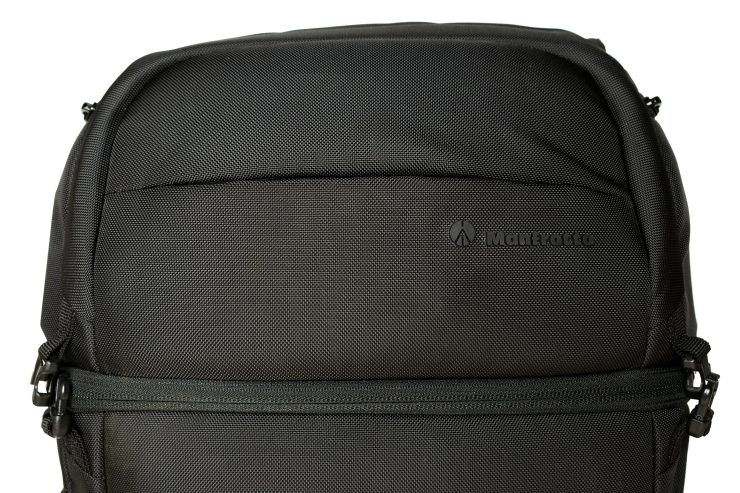
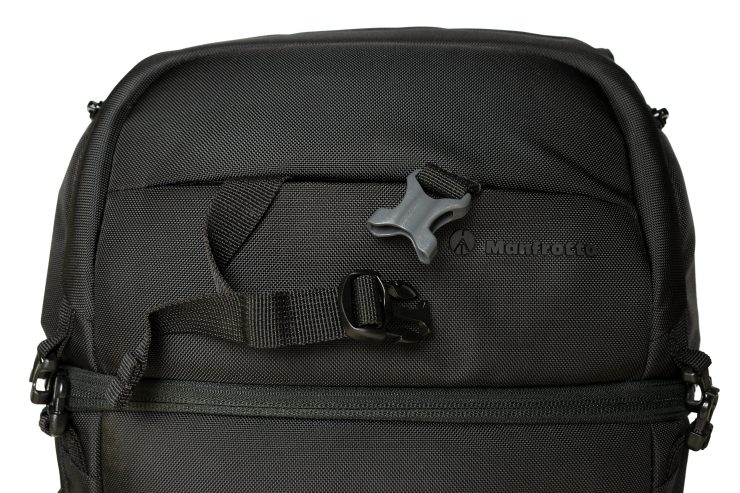
Many of my backpacks (the ThinkTank, for example) come with straps that can be attached to the exterior of the pack to hold a tripod, but for day to day use, I tend to remove them so that they don’t get snagged on things when they’re not in use. Sometimes they end up in an inner pocket of the bag, but often they’re removed from the bag entirely when I’m repacking for a trip… and they end up lost in the back of a drawer or in the trunk of my car, etc. That will never be a problem for this Manfrotto pack.
While the fabric shell of the backpack is water resistant, it also comes with a rain fly for use in heavy rain.
As a journalist, I carry a variety of pens and notebooks when I travel, and this pack does not have any pockets designed specifically for them. In fact, aside from the two main compartments, there are no large, thin pockets that would fit any notebook larger than a passport. Of course, notebooks as large as A5 size (about 6 x 8 inches) will fit easily in the upper compartment, and the “tablet” sleeve in the laptop compartment will also work for notebooks.
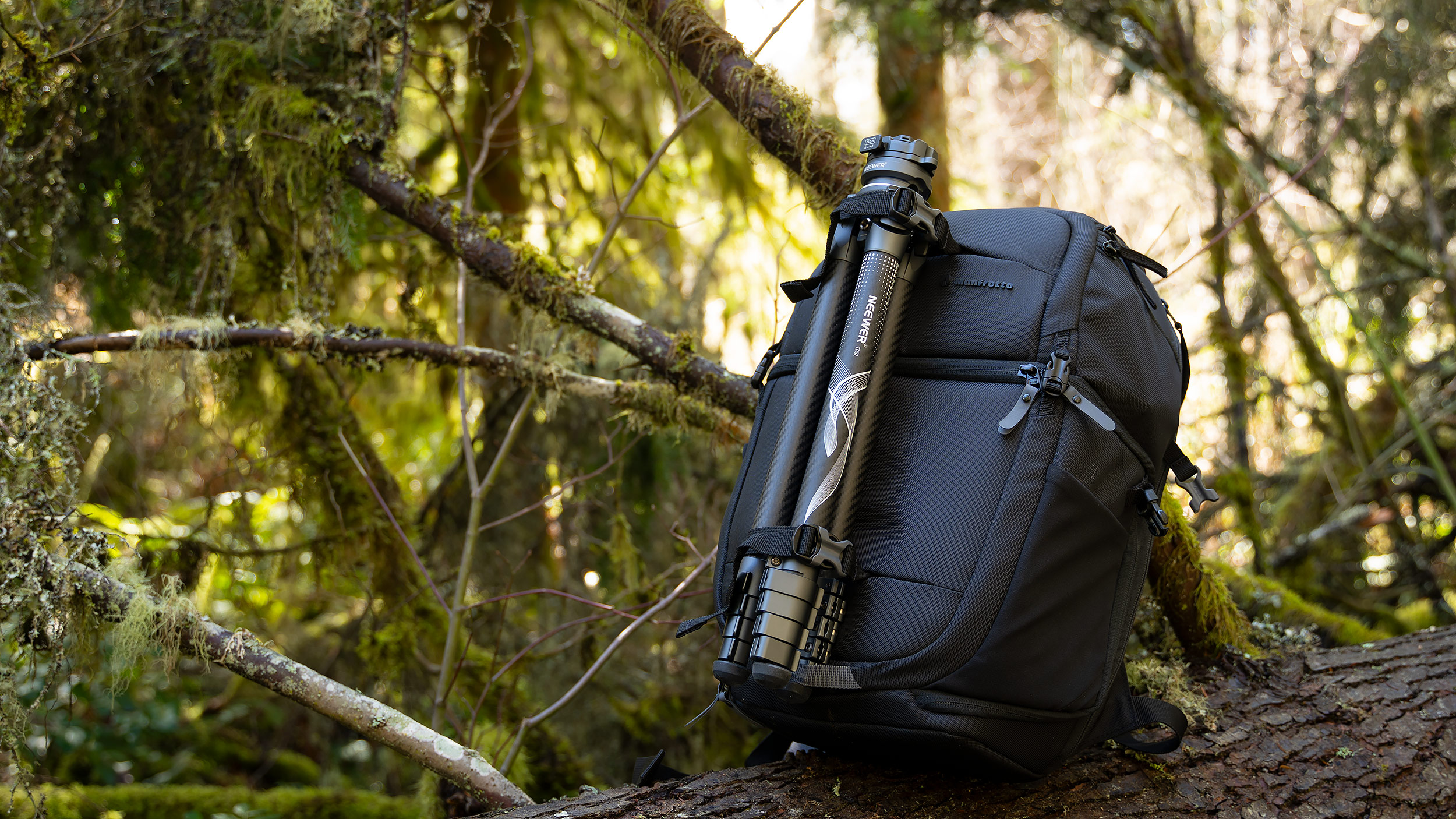
Quality, Comfort & Appearance
As you’d expect from a brand as reputable as Manfrotto, the Advanced Fast Backpack feels sturdy and well made. The zippers are YKK, and the clips are made by Duraflex. Even the interior padding has Manfrotto’s M-Guard branding.
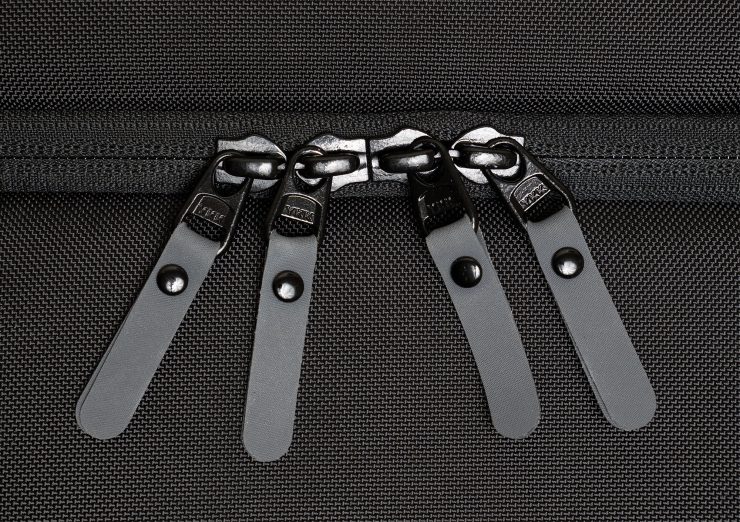
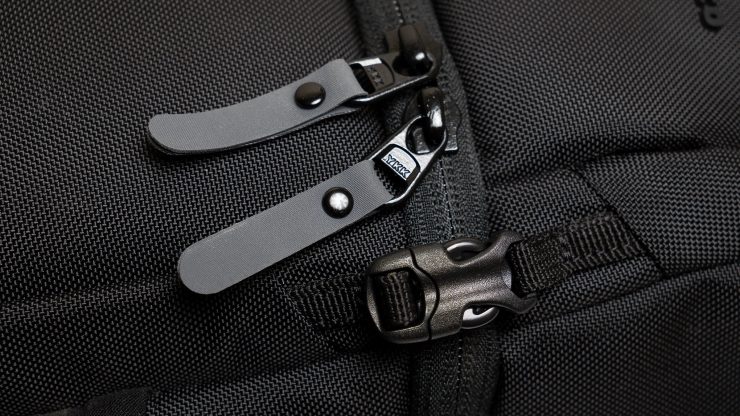
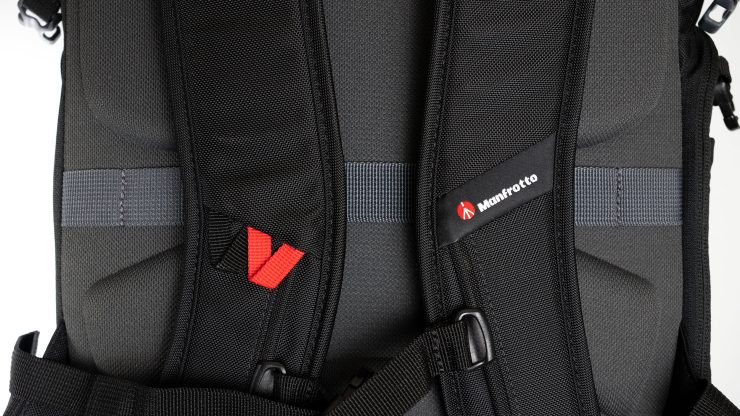
When it comes to comfort, the Advanced Fast Backpack is good but not outstanding. The rear of the pack has a pattern of six raised sections of padding that allow for ventilation between your back and the pack.
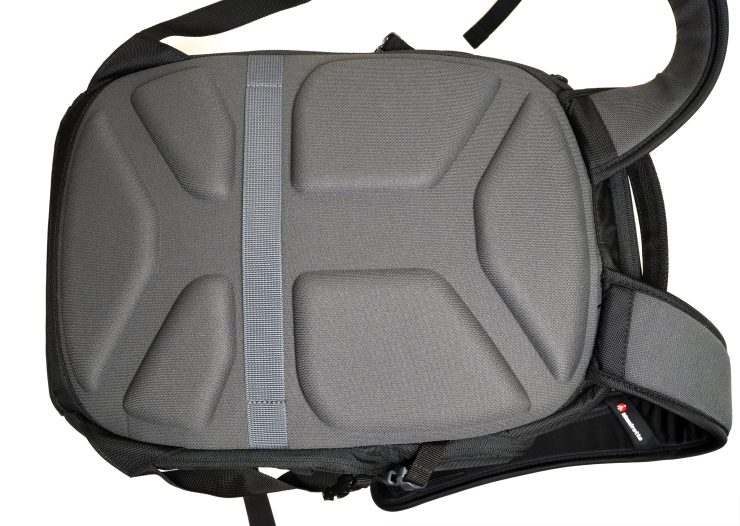
The main shoulder straps are 7cm wide (about 2.75 inches) and the padding is about 1cm thick, which is not bad for a pack this size; I find the pack to be comfortable even on long hikes. For comparison, the following table shows the shoulder strap measurements of some of the other backpacks that I have handy, all of which are larger packs.
| Backpack Model | Strap Thickness | Strap Width |
| ThinkTank Shapeshifter | 1.7cm | 7cm |
| ThinkTank Roller Essentials | 1.4cm | 6.4cm |
| Wandrd DUO | 1.1cm | 7cm |
| Moment DayChaser | 1.3cm | 7.2cm |
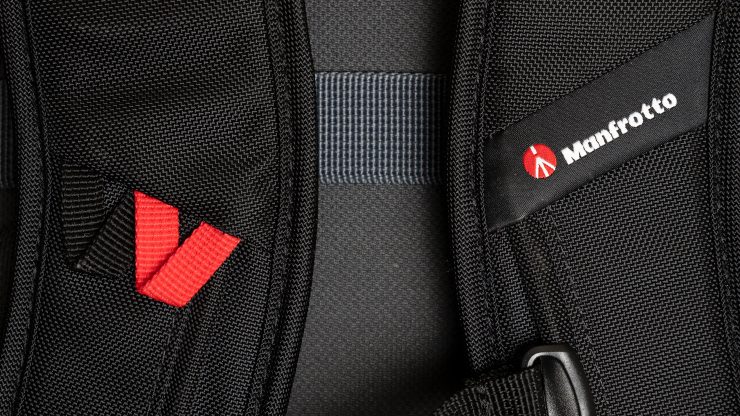
Though not large enough to have a hip belt for support, the Fast Backpack does have an adjustable chest strap that dramatically improves the comfort of the straps. It can be adjusted to higher or lower positions on the chest to fit the wearer’s build or sex.
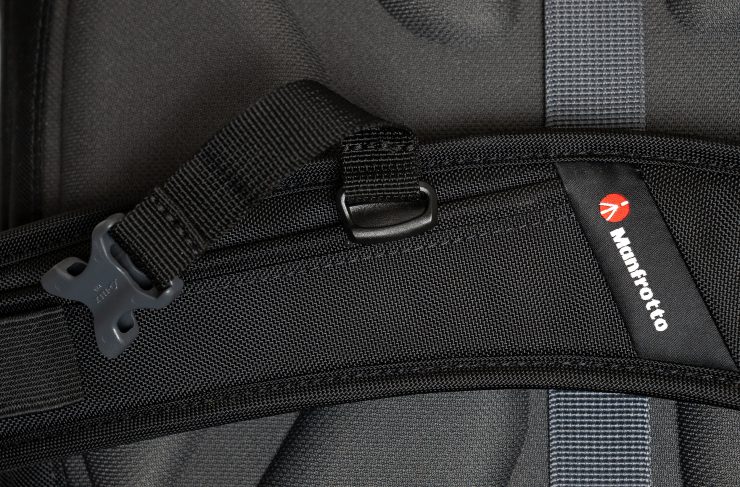
Granting that appearance is entirely subjective, this pack has a lot going for it. Its exterior is entirely black. with the exception of a fleck of red in the logo and a single loop on the main straps, so the pack is equally at home in the forest or in the city: black goes with everything. With the tripod straps hidden away, the pack’s appearance is smooth, sleek and modern.
Value & Other Options
Considering the prices of other popular camera backpacks these days, the Manfrotto Advanced Fast backpack is fairly reasonable at about $170, especially when compared to bags like the Peak Design Everyday Backpack (20L) that costs over $100 more at $280 (or $310 with an optional hip-belt).
If you’re not sold on the layout of the Advanced Fast Backpack but like the general design, there are six other packs in Manfrotto’s “Advanced” line, some smaller, some larger, and each with their own design goals. For me, the choice between the Fast Backpack and the Travel Backpack was probably the hardest. These packs can be purchased directly from Manfrotto or at shops like B&H Photo, Adorama, or Amazon.
If you like the layout of the Advanced Fast Backpack but want something larger, the Moment DayChaser is a much larger (35L) pack with similarly separated compartments and is better suited to longer hikes (currently on sale for $249 at Moment). We’ve also recently reviewed packs from Urth (the Norite) and Wandrd (the Prvke), and both are excellent options if you want a larger pack, though both are also a bit more expensive than the Manfrotto.
Conclusion
When it comes to camera equipment, I have a tendency to overpack2Some photographers seem content to stick a 35mm lens on their camera and leave it there for weeks at a time, but to me, that just seems like throwing away a bunch of important tools that are important for communication through photography: compression, isolation, depth of field separation, etc.. During my recent trip to Japan, my larger backpack was so heavy that I usually left it in my hotel room and just carried a camera around my neck and an extra lens in belt pouch, which was uncomfortable and I still ended up missing shots because I didn’t have equipment that I wanted.
In that regard, the Manfrotto Advanced Fast Backpack III is nearly perfect: its size is big enough to carry everything that I need, but it’s compact enough that I have to be selective, which keeps the weight and comfort in an easily usable range. Although this pack is relatively compact and lightweight, when it is loaded with my cameras, lenses, a tripod, and water bottles, the weight does add up, and I’d have like to have seen a hip-belt on this pack for those long days on my feet.
For sports or wildlife photographers who carry telephoto lenses that are larger than a 70-200 f/2.8, this pack is probably not going to be ideal, nor is it going to provide the space needed for a multi-day backpacking hike… but that’s not what it’s intended for.
Overall, the Advanced Fast Backpack III is an excellent choice for a photographer’s travel pack or a general day-pack. Its size is large enough to carry my necessary equipment for all but the most specialized jobs, and its upper compartment is perfect for my drone or the extra supplies that I’d want on a hike. Sturdy, well-built and flexible, this thoughtfully designed backpack will undoubtedly see thousands of travel-miles on my back this summer.
This is NOT a sponsored review. Light & Matter never accepts payment for reviews, and will never publish a positive review in exchange for compensation. This pack was provided for review at no cost to us, but the opinions are completely our own with no oversight, editorial input, or influence from Manfrotto. This review is as honest and unbiased as we can make it. All product links on this site, whether to reviewed products or alternative recommendations, are affiliate links and will help support our work in the future.
